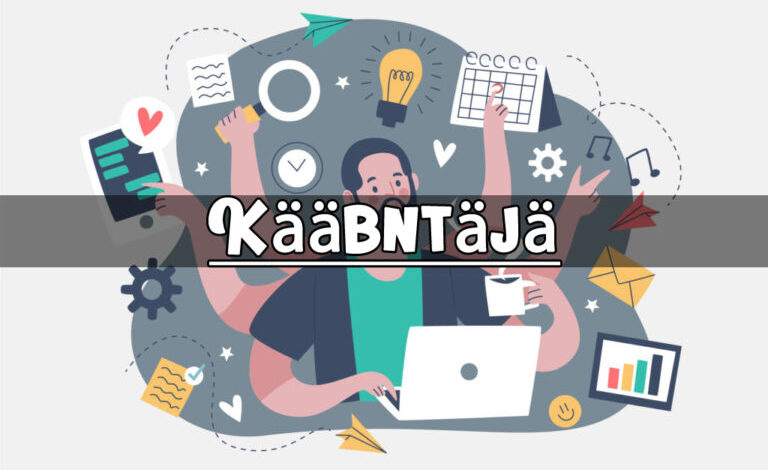Kääntäjä: The Art and Technology of Translation

Translation is a fascinating and complex process that serves as a bridge between cultures, languages, and ideas. The Finnish word “kääntäjä” translates to “translator” in English, and this term carries significant weight in a world where global communication is more important than ever. From human translators to cutting-edge machine translation systems, the role of the kääntäjä has evolved remarkably over the years.
What Does a Kääntäjä Do?
A kääntäjä is responsible for converting text or speech from one language to another while retaining the original meaning, context, and tone. This process is not merely about substituting words; it involves understanding cultural nuances, idiomatic expressions, and the subject matter to ensure the translation is both accurate and natural.
For example, translating a technical manual requires precision and adherence to industry jargon, while translating a novel demands creativity and an appreciation of literary style. In either case, a skilled kääntäjä must balance fidelity to the source material with the linguistic and cultural expectations of the target audience.
The Importance of Kääntäjä in Global Communication
In today’s interconnected world, the demand for skilled translators has never been higher. Businesses, governments, and individuals rely on kääntäjät to facilitate international trade, diplomacy, and cultural exchange.
- Business and Commerce: Companies entering global markets need translations for websites, marketing materials, product documentation, and customer support. A poorly translated message can damage a brand’s reputation, while an expertly crafted translation can enhance credibility and trust.
- Legal and Governmental Work: Legal translations, such as contracts, patents, and court documents, require precision to avoid misunderstandings. Similarly, diplomatic efforts often hinge on accurate translations to ensure clear communication between nations.
- Cultural Exchange: From literature to films, translators play a vital role in sharing stories and ideas across linguistic boundaries. The work of a kääntäjä enables people to access and appreciate cultural treasures from around the world.
Types of Kääntäjät
There are different types of translators, each specializing in specific areas or methods of translation.
- Human Translators: These are professionals who bring their linguistic expertise and cultural awareness to the translation process. Human translators excel in handling nuanced content, such as literature, poetry, or legal texts.
- Machine Translation Systems: Tools like Google Translate and DeepL use artificial intelligence to perform translations. While these systems have improved significantly, they are best suited for informal or general use, as they may struggle with complex or idiomatic language.
- Certified Translators: These kääntäjät have official qualifications to translate sensitive documents, such as birth certificates, academic records, or immigration papers. Their work often requires notarization to be legally recognized.
- Interpreters: Although technically distinct from translators, interpreters are a type of kääntäjä who work with spoken language. They facilitate real-time communication, such as in conferences, legal proceedings, or medical appointments.
The Role of Technology in Modern Kääntäjä Work
The advent of technology has transformed the role of the kääntäjä, making their work faster and more efficient. However, it has also introduced new challenges and opportunities.
- Computer-Assisted Translation (CAT) Tools: Tools like SDL Trados and MemoQ help translators manage large projects by offering features like translation memory, terminology databases, and quality assurance checks.
- Machine Learning and AI: Advances in natural language processing have led to significant improvements in machine translation. While AI systems cannot replace human creativity and cultural understanding, they serve as valuable tools for initial drafts or quick translations.
- Localization: Beyond translation, localization involves adapting content to suit a specific culture or region. This can include modifying images, adjusting currency formats, or rewriting text to align with local preferences.
Challenges Faced by Kääntäjät
Despite the availability of advanced tools, kääntäjät face several challenges in their work.
- Cultural Nuances: Translating idiomatic expressions or culturally specific references requires deep knowledge of both the source and target languages. A direct translation often fails to capture the intended meaning.
- Subject-Specific Knowledge: Translators working in fields like medicine, law, or technology must be well-versed in industry-specific terminology.
- Time Pressure: Deadlines can be tight, especially in industries like news or legal translation, where accuracy and speed are both critical.
- Balancing Creativity and Fidelity: Striking the right balance between staying true to the original text and making it resonate with the target audience is a constant challenge for literary and marketing translators.
How to Become a Skilled Kääntäjä
For those aspiring to become professional translators, a combination of education, experience, and continuous learning is essential.
- Language Proficiency: Mastery of both the source and target languages is the foundation of good translation work. This includes grammar, vocabulary, and cultural nuances.
- Specialization: Developing expertise in a specific field, such as finance, law, or medicine, can make a translator more competitive in the job market.
- Training and Certification: Formal education in translation studies or linguistics is highly beneficial. Certifications like those offered by the American Translators Association (ATA) or the Chartered Institute of Linguists (CIOL) can enhance credibility.
- Continuous Learning: Languages and industries evolve over time, so translators must stay updated with new developments, trends, and tools.
The Future of Kääntäjä
The future of translation is bright, with growing opportunities and innovations shaping the field. While AI-powered tools will continue to improve, the need for human translators will persist, especially in areas requiring creativity, cultural understanding, and nuanced communication.
Moreover, as globalization intensifies, the role of the kääntäjä will become even more crucial in fostering understanding and collaboration across borders.
Conclusion
The kääntäjä is much more than a translator of words; they are mediators of meaning, culture, and ideas. Whether through human expertise or technological innovation, the work of a kääntäjä enables us to connect with the world in profound and meaningful ways. As the demand for translation continues to grow, the art and science of being a kääntäjä will remain an indispensable part of our globalized society.
you may also read bestlucktime.




